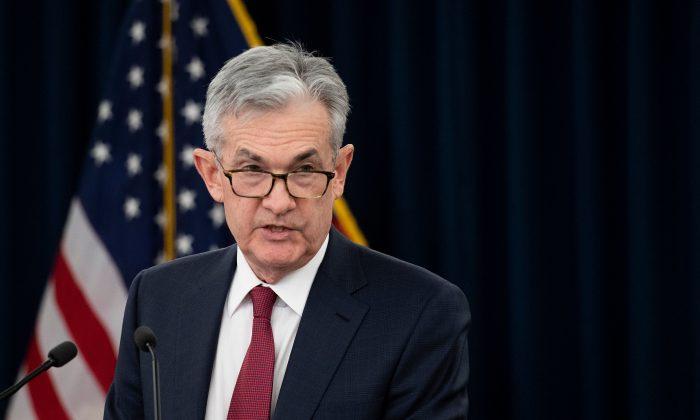WASHINGTON—Concerns over slowing economic growth, an increase in interest rates, and a government shutdown are said to have spooked investors in recent weeks. However, analysts say another culprit in the recent market sell-off may be a Federal Reserve policy that drains liquidity from financial markets.
The U.S. stock market staged a big comeback over the past two trading days after its worst-ever Christmas Eve performance.
Before the latest bounce, the S&P 500 index fell 20 percent from its recent peak, slipping into a bear market. Stocks fell for four straight trading days after the Fed raised its benchmark interest rate and signaled no backing off from its tighter policy approach.
“That tends to be a fairly toxic mixture for equity markets,” said Brian Jacobsen, multi-asset strategist at Wells Fargo Asset Management.
According to him, after the Fed meeting, investors have gotten the impression that the monetary policy may now be on “cruise control.”
“And the monetary policy that’s on cruise control can be a little dangerous because then it [the Fed] runs the risk of hiking [rates] until it hurts and not recognizing that it hurts until it’s too late,” he said.
On Dec. 19, the U.S. central bank raised short-term interest rates by 25 basis points to a range of 2.25 percent to 2.50 percent and signaled two more hikes next year.
Fed’s Balance Sheet
To jump-start the economy during the financial crisis of 2008, the Fed started to grow the size of its balance sheet. The Fed’s total assets increased significantly from $870 billion in Aug. 2007 to $4.5 trillion in Jan. 2015. The assets, however, have been declining since the beginning of the Fed’s balance sheet normalization program began in Oct. 2017.The Fed reduces its balance sheet by allowing maturing securities to roll off monthly without reinvesting the proceeds. The reduction was gradually increased from an initial $10 billion per month in 2017 to $50 billion per month in October 2018. The current pace of asset run-off, however, reduces the liquidity in the financial system, causing market volatility, according to some analysts.
“It’s never been done before. This is uncharted territory,” said a hedge fund manager from Texas. “Because there has never been a big buildup in the Fed’s balance sheet like there was from 2008 through 2011.”
This is partly the source of heightened uncertainty and anxiousness in the markets, he explained.
In an effort to calm the markets, Treasury Secretary Steven Mnuchin said that he held calls with the heads of the largest banks in America on Dec. 23.
“The banks all confirmed ample liquidity is available for lending to consumer and business markets,” a statement from the Treasury said.
Mnuchin’s announcement, however, had an unanticipated negative impact on the market.
‘Feel the Market’
Trump has repeatedly criticized the Fed, blaming the central bank for not “feeling the market.” He also slammed the balance sheet reduction program before the Fed’s two-day policy meeting this month.“Don’t let the market become any more illiquid than it already is. Stop with the 50 B’s. Feel the market, don’t just go by meaningless numbers,” he wrote on Twitter on Dec. 18. With the “50 B’s” Trump was referring to the Fed’s current monthly asset reduction amount, which is $50 billion.
According to Jacobsen, the Fed’s balance sheet reduction program has not necessarily affected the liquidity in the market.
“Quantitative tightening has not been playing a major role in the economic slowdown or in the financial market volatility,” he said.
Asset reduction has not disrupted the lending activity of the banks, which is crucial for the economy and the liquidity, he explained.
What really upsets the market, however, is the ongoing investor skepticism despite solid economic fundamentals. There are also fears about whether the Fed might be making a mistake.
“People are skeptical of the outlook for the economy for 2019. There’s been a rise in the risks of recession over the next 12 months,” Jacobsen said.
Despite market skepticism, Jacobsen’s team is optimistic about next year and expect a big comeback in U.S. stocks.
And this “is critically dependent on those economic fundamentals staying sound and the Federal Reserve not hiking until it hurts,” he said.






Friends Read Free